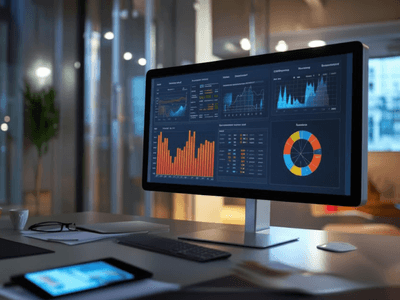It’s 2025, and the uncertainty curve around AI is beginning to break. Some have relaxed, convinced that AI won’t significantly disrupt their careers. Others have resigned themselves to the “reality” that AI will eventually take their jobs, thinking it’s just a matter of when.
But where do we go from here? How do we approach this technological evolution from an actionable, pragmatic perspective? This piece isn’t about AI regulation or fear-mongering. It’s about calibrating your mindset to navigate this evolution and make the most of every stage in this inevitable ride into a new era.
Keeping Up
The first step to safeguarding your career in an AI-driven world is understanding where AI stands. You don’t need to become an expert or enroll in intensive courses (although that’s always beneficial if it aligns with your interests). Instead, stay informed. Follow the latest AI advancements, particularly those from major players like Microsoft, Google, and Meta. Each of these companies is exploring distinct AI frontiers, and being aware of their developments can help you leverage new tools from day one.
Disconnecting yourself from AI’s progress is a mistake. Even if it’s not your passion, staying updated ensures you remain adaptable and prepared to integrate AI tools into your workflow.
Join the "Enemy"
Fighting against AI’s inevitability is futile. Instead, embrace its advantages. AI isn’t perfect, but chances are that if your job is done in front of a computer, it’s already capable of performing a good portion of it. The key is learning to collaborate with AI effectively. Identify areas where AI excels or matches your expertise, and shift your focus toward utilizing AI as a tool rather than resisting it.
This shift can free up your time for three critical activities:
- Upskilling: Invest in skills that AI is unlikely to master anytime soon, such as creative problem-solving or leadership.
- Stepping Up: Take on bigger, more impactful tasks that require human insight and strategic thinking.
- Refining: Hone your ability to craft effective prompts for AI tools, improving both the speed and quality of your output over time.
Here are a few examples of activities you can start performing with AI today to enhance your productivity and creativity:
- Automating repetitive tasks, such as generating boilerplate code or debugging common errors.
- Optimizing algorithms by testing and refining multiple iterations faster than manual processes.
- Generating documentation, including API references and code comments, with high accuracy.
- Assisting in data analysis by processing large datasets and visualizing insights in a fraction of the time.
Prepare
These measures may feel like temporary fixes, but they represent an essential transition. We are in a window of opportunity—a chance to redefine our careers, paths, and futures. For software engineers, the professional landscape of the next decade could shift dramatically. Waiting passively with a “whatever comes, will come” mindset is risky.
Use this time to evaluate your financial situation, explore backup plans, and reconnect with old passions or interests. Consider how your unique talents can intersect with emerging technologies, and think critically about how you want to evolve professionally.
Conclusion
AI’s rise isn’t a death knell for your career; it’s a call to action. By staying informed, embracing AI’s potential, and preparing for future shifts, you can position yourself not just to survive but to thrive in the age of AI. Your job isn’t at risk—your mindset is. Adapt, evolve, and lead the charge into a new era of innovation.












